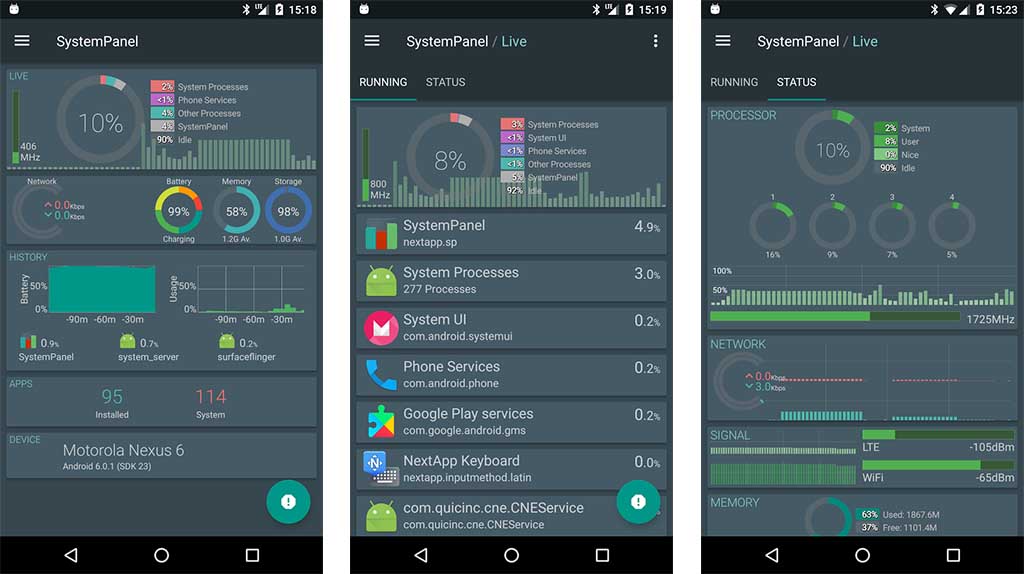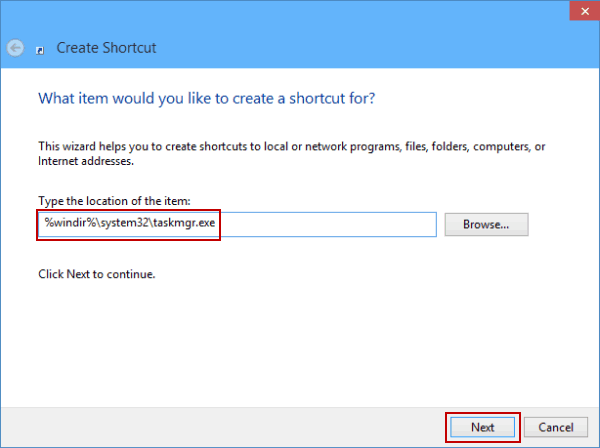
- Android task manager shortcut how to#
- Android task manager shortcut windows 10#
- Android task manager shortcut free#
- Android task manager shortcut windows#
The appearance of the icon can be customized with toggles for transparent background, opaque bar, bar at bottom, standard bar (changes from blocks to a line bar), no bar border, and show % sign. Use it to change the font of the MemInfo tray icon, switch from Gigabytes to Megabytes. Display the current memory value, or percentage or both. Want to see more than 10 processes in the list? Change it. Head to the Tray Menu tab to customize it.
Android task manager shortcut windows#
Change the behavior of the tray icon double click to one of these: Start Task Manager, Defrag Memory, Memory Info, Show Settings, Lock Workstation, Run Program, Shutdown Windows Dialog, or Show the Desktop. The MemInfo tray icon updates in real-time (1000 ms or 1 second), you can modify this from the Additional settings. The next tab is Additional Settings and it houses options to automatically defrag the memory every N number of minutes.

You may want to enable the "Show a message box" and/or "Write to log file" options to be triggered when the memory usage is extremely high. The program also defrags the memory automatically, though you can disable both of these options. If in case of the latter (memory usage is 90%), the program will display a balloon hint to alert you about it. The other option changes it to red when 90% or more of the memory is used. The first option changes the color of the tray icon's bar to yellow, when the memory is above 65%. There are two thresholds for this, both of which are customizable.

MemInfo can warn you when your computer's memory is running low. If you'd rather prefer to view a percentage value of the memory instead of GB, you can enable the setting for the same.
Android task manager shortcut free#
You can however change it to display the page file memory, or the amount of free memory left (not being used).
Android task manager shortcut how to#
If you are looking for how to open Task Manager, refer to this post and choose one way.As I mentioned earlier the tray icon displays the physical memory used by the system. Right now, we have shown you 10 ways to bring up Task Manager. The ways to do this work are multiple and this post - How to Create a Desktop Shortcut on Windows 10? (3 Categories) is helpful for you. You can create a desktop shortcut for this tool.

Step 2: Type taskmgr and press Enter to open Task Manager.Ĭreate a Desktop Shortcut for Task Manager Step 1: Run Command Prompt with admin privileges. Step 2: Type taskmgr to the text box and press Enter or click OK. Step 1: Press Win + R to get the Run window. Then, input %SystemDrive%\Windows\ System32 to the address bar, scroll down to find Taskmgr.exe and double-click it to open this utility.įollow the guide of how to bring up Task Manager via Run: To open it, you can go to File Explorer by Win + E. Task Manager is shipped as a separate program that integrates with Windows 10. Step 2: Input task manager to the search box and Click Task Manager from the result.
Android task manager shortcut windows 10#
How to open Task Manager on Windows 10 via Control Panel? These steps are here. Then, click Open from the right side to open this app. Windows will show you some results and Task Manager will be the best match.

In Windows 10, you can click the search field and type task manager. You can right-click the taskbar and choose Task Manager. If you like using a mouse, one of the fastest methods to open this app is using the taskbar. In the following paragraphs, let’s see some other ways to open Task Manager on Windows 10. Now, these three Task Manager shortcuts are for you and you can choose one to bring up Task Manager. Then, choose Task Manager to open this tool for task management. To access this menu, you can press Win and X on your keyboard. Windows 10 offers a Power User menu that is filled with several kinds of utilities including Task Manager. It can bring you to a screen with several options and you should click Task Manager to open it. If your keyboard is working, press the Task Manager hotkey – Ctrl + Shift + Esc when you need to end certain tasks.Īnother shortcut to open Task Manager is Ctrl + Alt + Del. This shortcut for Task Manager is the fastest way.


 0 kommentar(er)
0 kommentar(er)
